ISO9001 vs ISO17025 vs AS9100 For Your Metrology Needs
Every day, we in industry find ourselves in need of verifying the parts we have designed and built. Part of this verification comes in the forms of physical testing, as well as measurement and analysis. Whether you are looking at a prototype component or have a need to create an inspection plan for a production component, you will need someone who is proven capable in the science of measurement, otherwise known as the field of metrology. A simple Google search will reveal that there seems to be no lack of companies offering the services of metrology.
The question then turns from where I can find this service to which one of these companies is most qualified in the field of metrology to perform my work and provide results that I can trust. The answer lies in the details of the service provider’s credentials, or the accreditations that they have achieved.
Let’s start with the basics of accreditation and standards. For the purposes of testing and calibration ISO (International Organization of Standardization) has come up with the ISO 17025 standard to promote confidence in laboratories by allowing them to show that they are able to operate competently and generate valid results. Think about that statement for a moment. We want our clients to be confident that we as a metrology service are competent in the way we operate, and can generate valid results for you so that you can then make the business decisions you need to make without fear that your data is wrong. This is a great thing for you, our customer, since your livelihood depends upon the decisions you are making day to day. That’s why at 3D Engineering Solutions we proudly display our ISO17025 accreditation, through ANAB / ILAC, on our website, as well as on any marketing documentation you receive. We want you to know upfront that we are able to provide you with the services you require. This doesn’t mean that we can complete requirements for everything that you might need inspected. However it does mean that for the items listed on our scope of accreditation, we are competent and certified. This article on ISO 17025 accreditation and capability elaborates further. So what about those other metrology service providers, the ones who advertise statements such as “our services comply with ISO17025” or “our services are accredited to ISO9001 or AS9100”? What are the specific reasons you may not want to use one of these services for your metrology needs?
The devil is always in the details:
First, the ISO 9001 standard casts a very broad net in order to allow as many different types of organizations to utilize and comply with its principles. The 9001 standard simply specifies what your quality management system (or QMS) needs to look like in order to ensure that your company has well defined and organized processes and a continuous improvement system based on the plan-do-check-act methodology. This means that you, the procuring source, do not have to spend weeks combing through your supply sources background to ensure that you will be receiving quality parts or services. If they are accredited to ISO 9001 they have demonstrated that they are competent in regards to their QMS and general management systems.
By contrast, the AS9100 standard is a set of standards that takes the broad net of ISO 9001 and closes the holes in that net by focusing directly on the issues that relate to the aerospace industry. AS9100 utilizes ISO 9001 as its foundational quality management system, but it then deep dives into areas of risk that aerospace companies would need to be more concerned with. The reader will note that the additional requirements of this system to the base of ISO 9001 are complementary and not alternative to the base requirements, and this is the net tightening around the specific requirements that are important to the aerospace industry.
Both ISO9001 and AS9100 accept, and sometimes require, ISO17025 accredited inspections because of the additional rigor involved in obtaining that certification above and beyond themselves.
Now we can see that the ISO 9001 standard is a great foundation to start from, and that the industry specific standards supplement this foundation to build the quality into the management system. This is also true for ISO 17025. ISO 17025, as it relates to metrology, is an industry standard that governs calibration and testing laboratories. As we already mentioned at the beginning of this article, it allows you have confidence in the results you receive from a metrology services company. The ISO17025 net starts to tighten around the metrology service by adding the need to ensure that your people are qualified and competent in the science of measurement. That your equipment is properly calibrated and maintained. That you have processes in place for sampling and handling of parts, and that you have processes in place for the proper storage of data collected on the parts. Beyond this, the deep dive gets deeper by requiring methods to ensure the validity of data, the development and continuous monitoring of measurement uncertainties, and how to properly report the results of a measurement to our customers.
Be wary of companies who claim that they ‘comply’ with ISO17025. They are not actually accredited to that standard! They have no responsibility to undergo yearly audits, train their staff for proficiency and test that proficiency. You will also struggle to find measurement uncertainty information for the measurements that are made. These are companies who basically indicate that they intend to follow the ISO17025 standard, however they are not willing to prove through rigorous accreditation processes that they are compliant. Sometimes your measurement requirements may not require ISO17025 certification and then this type of service could be appropriate. However if they are not being continually audited and continually improving from such audits, it may put processes and methods into question.
To verify any particular company, you can check with the accrediting bodies to see if those companies are listed. This is also a great source to find ISO17025 accredited sources. Two common accrediting bodies are ANAB and A2LA. You can search for accredited sources here for ANAB and here for A2LA.
As a side note, A2LA and ANAB are not accreditations in themselves. Sometimes I hear a customer ask for an ‘A2LA accredited inspection’. For dimensional metrology, they mean to say that they need an ‘ISO17025 accredited inspection by a source who is accredited by one of the accrediting bodies such as A2LA or ANAB (Logos shown below). I chalk this up to excellent marketing efforts by some of those bodies who have associated themselves as the definitive source.

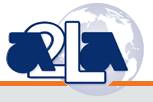
There are many organizations that provide inspection services that become accredited to ISO9001 and/or AS9100. This in itself is a good thing and helps ensure that their management systems are in order. Most of these inspection service sources manufacture and/or sell equipment. So their ISO9001/AS9100 certifications are related to the sale and ‘service’ of that equipment. Not the selling of their inspection service. In their scope statements, you might find reference to “inspection” and “measurement”. However, this does not provide the same assurances about proficiency in measurement ability that ISO17025 was designed for. It would be easy to be misled that the summary scope statement on the certificate implies a proficiency in the measurement methods, training or personnel – but it doesn’t! If you are a seasoned quality manager looking for a service provider and have a requirement for accreditation, you would spot this very quickly. However, many engineers who do not work in quality or are new to a quality role may not.
One sign to look for is a statement of measurement uncertainty. This is a quantity different than an accuracy statement. The subject of measurement uncertainty is too detailed for full explanation in this post. You can read about this subject further here. However it can be said that it starts with the manufacturers stated accuracy and then adds factors to cover real world situations that influence where the bounds of the mesurand (the dimension or item to be measured) is located. Each supplier who is accredited should allow you to view their certificate and scope of accreditation. As an example, ours is located on ANAB’s site and can be viewed here.
Another item to look for is a logo similar to the one below (ours) that indicates ISO17025 in the logo.
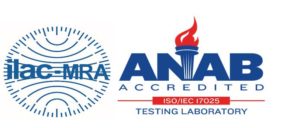
So let’s summarize why you may not want to use a service provider who is only accredited to ISO 9001 or AS9100. The biggest reasons are:
- Their compliance is only proven to the base standard and not to the specific requirements related to a calibration or testing laboratory
- They are NOT required to prove metrological traceability of their measurements in the form of an unbroken chain of measurements back to an appropriate reference through study and calculation of measurement uncertainty
If they ARE accredited to ISO 17025 then they have already demonstrated that they are competent and efficient in the science of metrology
Because of these reasons alone, you would need to verify everything that a non-accredited source provided you in order for you to maintain compliance to your own quality management system. The risk then shifts from the laboratory to you, and your decision making just got a lot more tedious and frustrating.
Please contact us at 3D Engineering Solutions to discuss your accredited measurement needs!

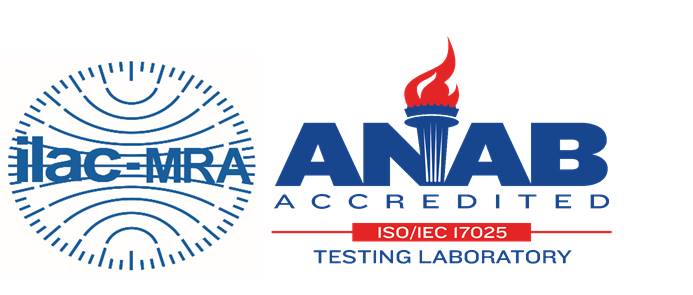
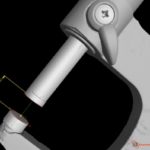
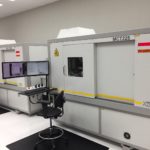
Leave a Reply
Want to join the discussion?Feel free to contribute!